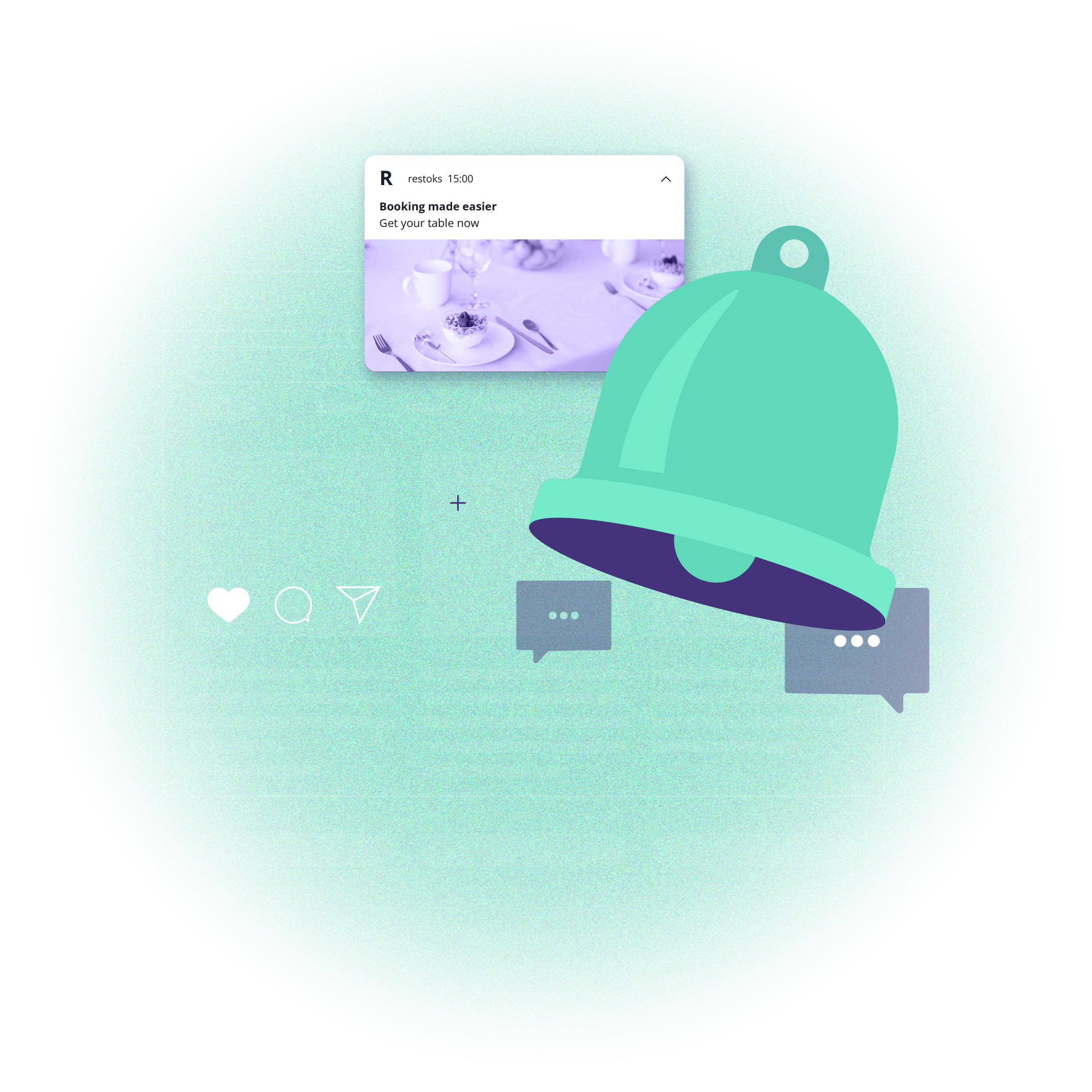The future of fashion e-commerce: 5 trends to follow
 Aleksandra Kozioł
Aleksandra Kozioł
The future of fashion e-commerce: 5 trends to follow
 Aleksandra Kozioł
Aleksandra Kozioł
The beginning of the year is always a good time to analyze trends that will shape our world and habits in the coming years and months. Today, we take a closer look at the fashion industry (to be exact: its e-commerce branch). We name five crucial trends that each online store selling apparel should be vitally interested in. Let’s have a look at them!
Although you can't expect a huge revolution in the way we buy clothes online, you should be aware of some interesting changes and emerging trends. Use this knowledge to improve your offer and stay relevant to your customers.
ReCommerce
It's an abbreviated form of the "reverse commerce" term. Yes, online stores more and more frequently offer to rent and resell pre-owned apparel. There are several reasons behind this trend, but the biggest is sustainability. Nowadays, customers pay attention to the impact on the environment of their shopping and habits. According to a study conducted in 2021, protecting the environment is the number one concern of generation Z adults:

ReCommerce simply translates this point of view to the fashion world. Since customers are increasingly interested in economical and sustainable ways of buying clothes, the secondhand market is currently flourishing. After all, why wouldn't you buy a pre-owned piece of clothing that has been checked for defects and washed and ironed before being put again on sale? Today, the answer is – you should! Especially because you have to pay only a fraction of the original price.
Pre-owned apparel is available in a growing number of places. For instance, Zalando already has such a category on their marketplace:

Image source: Zalando
And then, we have the Vinted mobile app. It has been designed specifically to streamline the process of selling pre-owned clothes to give them a second life. In May 2021, Vinted had about 45 million users and was available in 13 countries [TechCrunch].

Image source: Retail Insights Network
If you’re still not certain whether you should introduce ReCommerce in your offer, let’s just say the secondhand market is projected to double in the next five years, reaching $77 billion. Do we need to say anything else? :)
AI and related technologies
Artificial intelligence has taken over both e-commerce and fashion. Thanks to intelligent algorithms, you can target users more effectively, offer personalized product recommendations, and enable them to get acquainted with the product before purchasing it. With AI, online stores can recommend clothes to customers based on their data that consists of their height, weight, size, age, and body shape. As a result, the provided list of pieces of clothing is fully tailored to a given person, and therefore, accurate.
Here’s how it works with one of the British product recommendation engines:

Image source: Prime AI
Of course, the role of AI in e-commerce doesn’t end there. We ought to mention two other AI-related technologies: AR (augmented reality) and VR (virtual reality). Thanks to them, you can experience the product before purchasing it without going to the store. Without a doubt, AI is one of the crucial technologies behind this huge e-commerce surge during the pandemic. Virtual dressing rooms, personalized product recommendations, virtual meeting with stylists and customer advisors – all of that has made online fashion shopping pleasant and effective.
Again, let’s take a look at some examples.
GUCCI TRY-ON APP
In 2020, Gucci announced their new AR project executed in partnership with Snapchat. Their mobile try-on app enables consumers to test how their sneakers would look on their feet. There is also a shopping feature, so when the user finds the perfect pair of their new sneakers, they can buy them right away.
TIMBERLAND’S MAGIC MIRROR
This "magic mirror" has already been tested in some of Timberland's stores. Like Gucci's app, it uses AR technology to virtually "dress" customers in selected pieces of clothing from a given collection. As a result, customers see how they look in a specific garment without entering the store.
Here’s the video of how this solution works in the Polish Galeria Mokotów shopping center:
Genderless fashion is on the rise
In June 2021, CNN called gender-neutral clothes “the next big thing in fashion”. More and more brands launch product collections that fit everyone, regardless of their gender. In late 2020, a study in the United States revealed that 70% of consumers aged 16-24 agreed or strongly agreed that gender doesn't define a person as much as it used to.
Abercrombie & Fitch has their “everybody collection”; Louis Vuitton introduced some gender-neutral products in their spring/summer 2021 collection, and in 2020, Marc Jacobs launched a polysexual collection called Heaven. Of course, the list of brands offering gender-neutral products is much longer, and we can expect this trend to grow.

Image source: Louis Vuitton
Buy now, pay later
Not that long ago, customers bought only expensive products in installments. Today, the list of products we buy this way is much longer and comprises clothing as well. Klarna, a Swedish company (currently headquartered in the United States), is a good example. This platform enables customers to shop online and pay for products later.

Image source: Forbes
Klarna offers a number of payment options, including direct payments, pay after delivery, and installments plans (with the major one consisting of four interest-free payments). Today, Klarna has over 90 million users, and over 250,000 retailers use their offer to attract customers. This service is available in 17 countries, and the number of transactions per day has already exceeded 2 million. Here, you will find the list of fashion retailers using Klarna to provide their customers with convenient payment options.
See Klarna in action:
Naturally, it’s not the only such platform out there. Similar services are offered by:
Is it time to introduce installments in your online store? Most likely, yes!
Social shopping
People have always been using social media to buy and sell products. It was just a matter of time for social shopping (also known as social commerce) to become a major online trend. Let’s start with Facebook. According to Oberlo, almost 80% of American customers use this platform to discover new products.

Image source: Oberlo
As a follow-up of this fact, in May 2020, Facebook introduced Facebook Shops. A new mobile-first service that enables a better, more comprehensive shopping experience. Companies running profiles on Facebook and Instagram can now create Shops where users can browse products and even buy them without the need to leave the platform (this service is currently available in the United States only). And because it’s all a part of the larger ecosystem, retailers can easily communicate with their customers (using Messenger and WhatsApp). In the near future, Mark Zuckerberg’s platform will surely introduce new features, including full integration with e-commerce platforms and loyalty programs.
Both Facebook Shops and Instagram Shops are already available, and a growing number of brands use these channels for interesting more people in buying their products.
Take a look at this short video published by Shopify explaining how Instagram Shops work, why you should consider that channel for your brand, and how to set up such a store:
Summary: The future of fashion e-commerce
Without a doubt, fashion e-commerce will grow and evolve. Customers are continually looking for new ways to discover and buy products online. And online stores try to keep up with this dynamic pace by offering them new solutions and technologies. If you run an online store offering clothes or shoes, think about implementing at least some of the solutions mentioned in this article to your business. We hope this way you will get ahead of your competition and attract many new customers!
And speaking of attracting more customers: Have you already tried push notifications? As our experience shows, they work particularly well in the e-commerce world. Fashion online stores all over the world use them to:
Rescue abandoned carts
Inform their customers about new arrivals
Share vouchers and promo codes
Send welcome, thank-you, we-miss-you messages, and more!
Push notifications are quick, convenient, flexible, and most importantly, work brilliantly in the cookieless world. If you want to know more, call us or register for free today!

Content Specialist @PushPushGo
Editor and writer. She is interested in media and new technologies.





